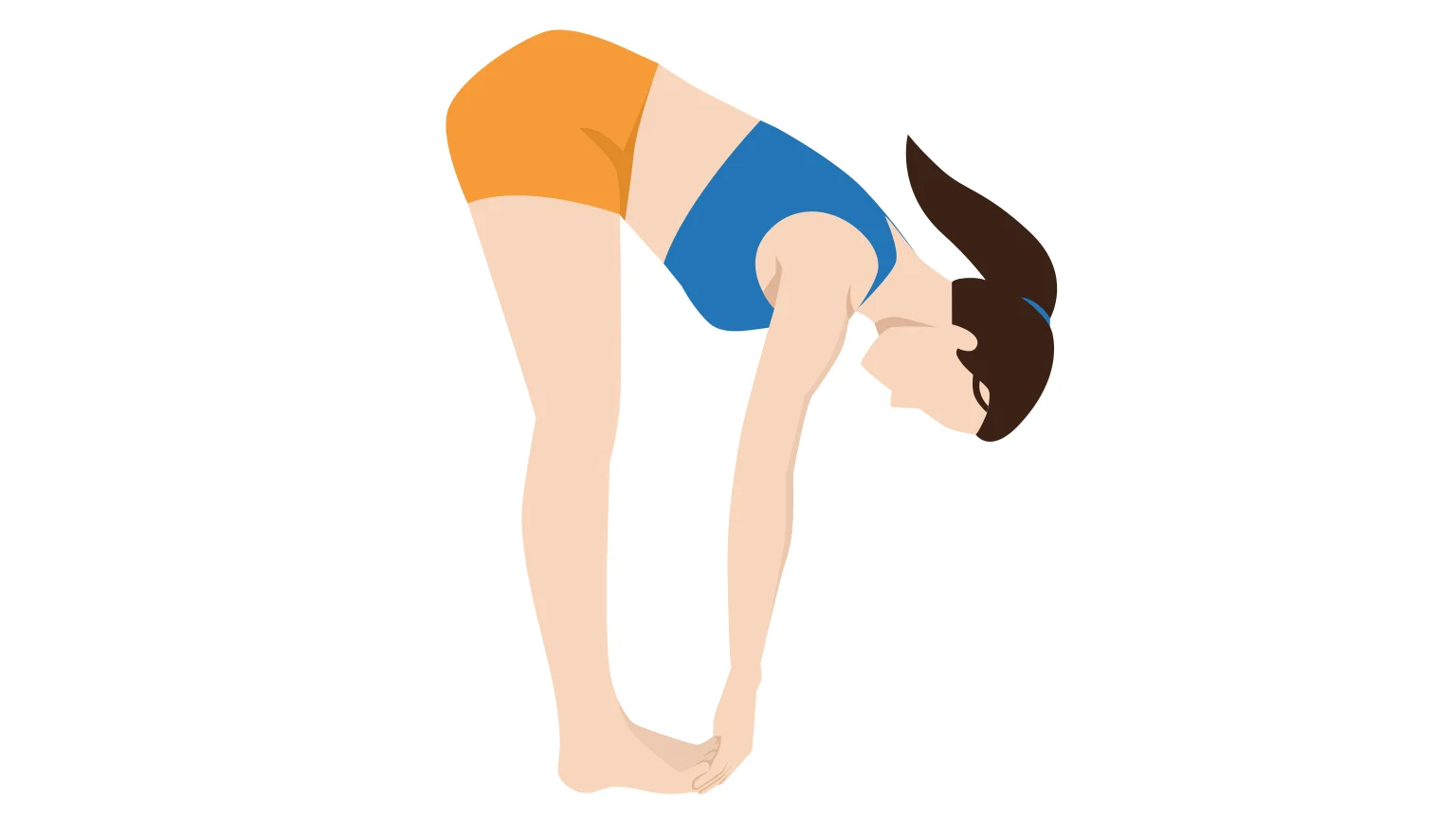Big Toe Pose (Padangusthasana)

The Big Toe Pose, also known as Padangusthasana, is a standing forward-bend yoga pose. In this pose, you bend your body over your legs. Then you reach your hands down to hold onto your big toes. Your spine is lengthened, with your head hanging down towards the ground.
- Position: Standing.
- Stretched body parts: Hamstrings, calves and thighs. Your back muscles are also engaged as you lengthen and straighten your spine.
- Benefits: This pose provides a deep stretch of your hamstrings, calves and thighs, which can improve flexibility and reduce tension. Because of the forward bending position, this pose also compresses and massages your abdominal organs, which can help with digestion.
- Similar poses: Standing Forward Bend (Uttanasana), Downward-Facing Dog (Adho Mukha Svanasana), Wide Legged Forward Bend (Prasarita Padottanasana).
Meaning of Padangusthasana
The name of this pose, “Padangusthasana”, is made up of three Sanskrit words:
- “Pada” means “foot”;
- “Angusta” means “thumb”; and
- “Asana” means “pose”.
Translated literally, you get “thumb of the foot pose”. “Thumb of the foot” of course is your big toe, so hence we get the name Big Toe Pose. The pose involves holding your big toes with your fingers while folded forward.
How to do The Big Toe Pose
- Stand upright on your yoga mat with your feet positioned hip-width apart.
- Take a deep breath then, as you exhale, hinge at your hips and bend forwards.
- Reach out, extending both arms, to reach your feet. Hold onto your big toes with your fingers.
- Keep your head and neck relaxed, allowing your head to hand freely down towards your feet.
- Each time you inhale, lift your torso slightly, and with each exhalation, deepen into the forward bend.
- Hold the pose for 30-60 seconds.
- To exit the pose, let go off your toes and slowly raise your torso back up to the starting position.
Variations
- For extra support: If you have difficulty reaching your toes, you could instead place your hands on your knees or shins. Alternatively, you can use a yoga strap around the balls of your feet and hold onto the strap instead.
- Easier pose: This pose will stretch your hamstrings and glutes. If you find it difficult to bend all the way into the pose, you may bend your knees slightly or reduce the amount you bend.
- Half forward bend: In this variation, you bend forward halfway, keeping your back flat and parallel to the floor. This may be an easier pose if you find it difficult to bend too far or reach out to your toes.
- Wall Roll Down: The Wall Roll Down is a pilates exercise that is similar to The Big Toe Pose. In this exercise, you stand with your back against a wall. Then, you start to roll down as if peeling your spine off the wall, reaching down towards your toes. The wall provides additional support.
Tips
- Keep your spine straight to avoid pressure. Don’t round your back as you bend into the pose. This will help avoid strain or injury.
- Don’t force the bend forwards. Use gravity to help your body drop into the correct position, and match your movement with your breathing.
- Avoid this pose if you have back injuries, vertigo, are pregnant or have any other medical condition.
Prep poses
- Downward-Facing Dog (Adho Mukha Svanasana) – This pose stretches your hamstrings, calves and hip and also involves the straightening of your arms and legs. The position of your head below your chest will prepare your body for the more intense Big Toe Pose.
- Standing Forward Bend (Uttanasana) – The Standing Forward Bend is at first-glance a similar pose to The Big Toe Pose, as both involve folding your body forward and reach down to your feet or legs. The Big Toe Pose, however, is a more advanced pose because it requires you to fully straighten your legs, which provides a deeper stretch in your hamstrings.
- Wide Legged Forward Bend (Prasarita Padottanasana) – This pose helps stretch your hamstrings and calve muscles. In the Wide Legged Forward Bend, you stand with your feet 3-4 feet apart, making it easier to reach down to the floor compared to The Big Toe Pose.
